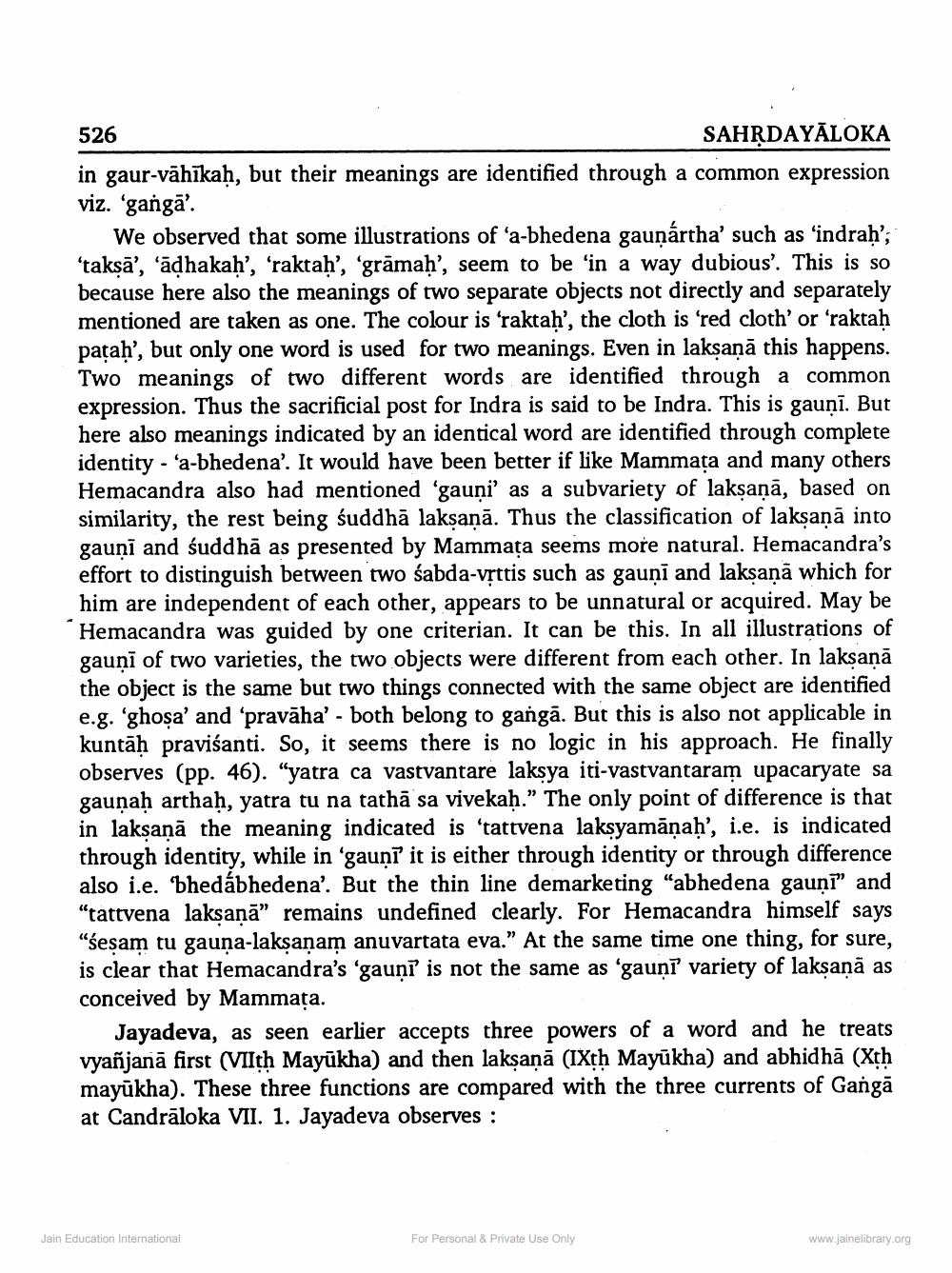________________
526
SAHRDAYĀLOKA in gaur-vāhīkaḥ, but their meanings are identified through a common expression viz. 'gangā'.
We observed that some illustrations of ‘a-bhedena gauņártha' such as ‘indraḥ'; 'taksā', 'ādhakaḥ', 'raktaḥ', 'grāmaḥ, seem to be in a way dubious'. This is so because here also the meanings of two separate objects not directly and separately mentioned are taken as one. The colour is 'raktaḥ', the cloth is ‘red cloth' or 'raktaḥ pataḥ', but only one word is used for two meanings. Even in laksaņā this happens. Two meanings of two different words are identified through a common expression. Thus the sacrificial post for Indra is said to be Indra. This is gaunī. But here also meanings indicated by an identical word are identified through complete identity -'a-bhedena'. It would have been better if like Mammata and many others Hemacandra also had mentioned 'gauņi' as a subvariety of laksaņā, based on similarity, the rest being suddhā laksanā. Thus the classification of lakṣaṇā into gauni and suddhā as presented by Mammața seems more natural. Hemacandra's effort to distinguish between two śabda-vrttis such as gauni and laksaņā which for him are independent of each other, appears to be unnatural or acquired. May be Hemacandra was guided by one criterian. It can be this. In all illustrations of gauni of two varieties, the two objects were different from each other. In laksaņā the object is the same but two things connected with the same object are identified e.g. 'ghosa' and 'pravāha' - both belong to gangā. But this is also not applicable in kuntāh pravišanti. So, it seems there is no logic in his approach. He finally observes (pp. 46). "yatra ca vastvantare laksya iti-vastvantaram upacaryate sa gaunah arthah, yatra tu na tathā sa vivekah." The only point of difference is that in laksanā the meaning indicated is 'tattvena laksyamāṇah', i.e. is indicated through identity, while in 'gauni it is either through identity or through difference also i.e. 'bhedábhedena'. But the thin line demarketing "abhedena gauņi” and "tattvena laksanā” remains undefined clearly. For Hemacandra himself says "sesam tu gauna-laksanam anuvartata eva." At the same time one thing, for sure, is clear that Hemacandra's 'gauni is not the same as 'gauni variety of laksana as conceived by Mammaţa.
Jayadeva, as seen earlier accepts three powers of a word and he treats vyañjanā first (VIlth Mayūkha) and then lakṣaṇā (IXth Mayūkha) and abhidhā (Xth mayūkha). These three functions are compared with the three currents of Gangā at Candrāloka VII. 1. Jayadeva observes :
Jain Education International
For Personal & Private Use Only
www.jainelibrary.org




